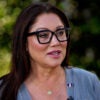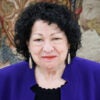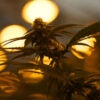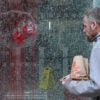Global-warming alarmists have reemerged with a vengeance following the recent heat wave featuring record temperatures across the nation and dozens of wildfires throughout the West. But how much has global warming contributed?
At least two climate change scientists refused to identify any possible threshold, with one declaring, “I honestly don’t think you can really put a number right on it.”
Climate Communication, a non-profit science outreach organization funded by the Rockefeller Brothers Fund and the ClimateWorks Foundation and dedicated to the study of “global environmental change,” hosted a conference call with reporters on June 28 to coincide with the release its newest publication, “Heat Waves and Climate Change.”
When pressed by Associated Press science reporter Seth Borenstein on the connection between global warming to recent events, Dr. Michael Oppenheimer and Dr. Steven Running, two of the panelists showcased by Climate Communication, rejected the line of questioning, refusing to offer any estimate.
“I won’t do it,” said Oppenheimer.
Running told Borenstein that to offer such an estimate is “probably really dangerous for us,” instead clarifying that more analysis and “statistical rigor” would need to be applied before the conclusions were sent out “into the public arena.”
Susan Hassol, the moderator for the call, appeared to chastise Borenstein when he pursued the line of questioning, offering to “make it easier” by saying whether or not global warming accounted for more or less than 50 percent to the current situation.
According to Hassol, the question from Borenstein was not “well-posed,” and stated that even the types of modeling necessary to determine attribution “are not very good” at providing that conclusion.
Borenstein bristled at Hassol’s comments.
“I understand, I’ve been covering this for 20 years, I understand. I don’t need a lecture, thank you very much,” responded Borenstein.
Borenstein’s most recent AP story was titled, “This US summer is ‘what global warming looks like,'” dated July 3, five days after the conference call.
In the story, Borenstein, by way of exposition, wrote:
If you want a glimpse of some of the worst of global warming, scientists suggest taking a look at U.S. weather in recent weeks.
Horrendous wildfires. Oppressive heat waves. Devastating droughts. Flooding from giant deluges. And a powerful freak wind storm called a derecho.
These are the kinds of extremes climate scientists have predicted will come with climate change, although it’s far too early to say that is the cause. Nor will they say global warming is the reason 3,215 daily high temperature records were set in the month of June.
Scientifically linking individual weather events to climate change takes intensive study, complicated mathematics, computer models and lots of time. Sometimes it isn’t caused by global warming. Weather is always variable; freak things happen.
Borenstein also quoted Oppenheimer’s observations about the recent weather events.
“What we’re seeing really is a window into what global warming really looks like. It looks like heat. It looks like fires. It looks like this kind of environmental disasters,” said Oppenheimer.
Oppenheimer’s colleagues in story agreed.
“This is what global warming looks like at the regional or personal level. The extra heat increases the odds of worse heat waves, droughts, storms and wildfire. This is certainly what I and many other climate scientists have been warning about,” said one professor of geosciences and atmospheric sciences.
Another simply declared that it’s “I told-you-so time.”
Sen. Jim Inhofe (R-OK) revealed the contents of the conference call during a speech on the Senate floor earlier today.
AP Reporter Seth Borenstein: Let me try and put you more on the spot, Mike and Steve: I know there’s no attribution – you haven’t done attribution studies, but if you ballparked it right now and had to put a percentage number on this, on the percentage that the heat wave, the percentage of blame you can put on anthropogenic climate change, on this current heat wave, and on the fires, what percentage would the two of you use?
Dr. Michael Oppenheimer: Come on, I’m not going to answer that. Yes I will answer it, and my answer is: I won’t do it. You know, we have to do these things carefully, because if you don’t, you’re going to end up with bogus information out there. People will start disbelieving because you’ll be more wrong, more often. This is not the kind of thing I want to do off the top of my head. Nor do I think it can be done, you know, convincingly, without really taking – doing careful analysis, so I’ll pass on this one and see if Steve has a different view.
Dr. Steven Running: Well, I already got way too hypothetical in my last answer. Yeah, it’s… it’s probably really dangerous for us to just lob out a number. I – We could certainly lob out some guess, but it wouldn’t be based on the kind of analysis and statistical rigor that we want to put out into the public arena.
Seth Borenstein: Okay let’s make it easier. 50% line…how about 50% line: Is it more than 50%, do you think, or less? Just, you know, on one end. More or less?
Susan Hassol, Moderator for the Climate Communication conference call: Seth, most of the scientists I talk to say it’s a contributing factor and that’s what we can say and that it’s really not even really a well-posed question, to ask for a percentage, because it just – what you’re asking really is for a model to determine the chances of this happening without climate change or with climate change and models are not very good at that.
Seth Borenstein: I understand, I’ve been covering this for 20 years, I understand. I don’t need a lecture, thank you very much. What I’m asking for is when the fingerprint – when the attribution studies are done, two or three years later, it’s already beyond people’s memory. I’m just looking for whether you could say this is – global warming was the biggest factor, more than 50 – most of the factor, you know, either more or less than 50%…
Dr. Michael Oppenheimer: I honestly don’t think you can really put a number right on it. What I honestly think is global warming has in general made this part – that part of the world – warmer and drier than it otherwise would be, and that makes it fertile ground for fire events like the one we’re seeing. So did global warming contribute? Yes. Can I really make any sort of estimate – numerical estimate- about how much? Not really sitting here on a telephone at my desk, and maybe not even if I had six months.
Climate Communications includes the controversial climate change scientist Dr. Michael Mann on its board of science advisors.































38 Replies to “Scientists Blame Global Warming for Heat Wave, But Fail to Back It Up”